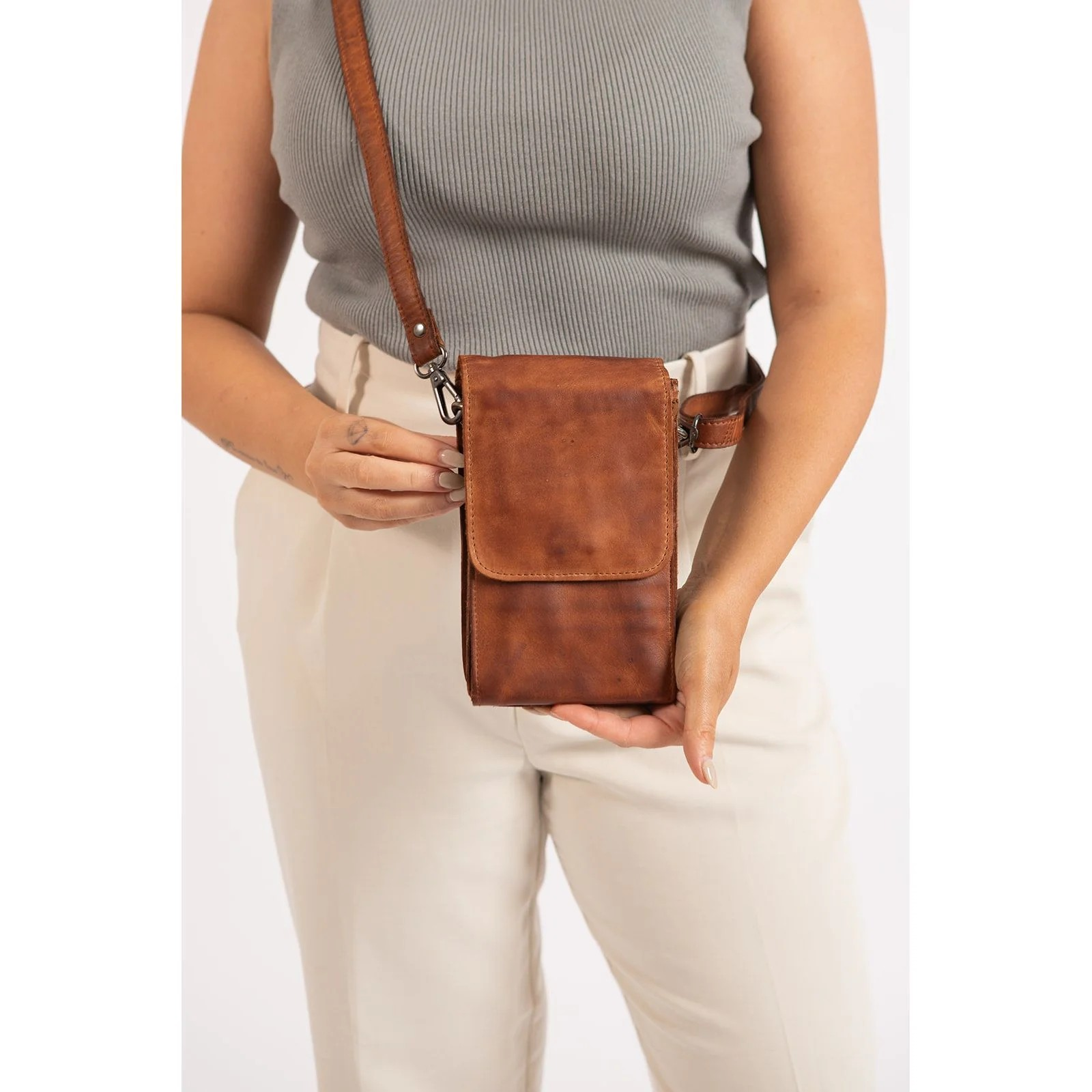Your Cart is Empty
FREE SHIPPING ON ALL ORDERS
This question has piqued the curiosity of many leather enthusiasts, especially those who invest in items like high-quality leather tote bags, backpacks, wallets, and similar goods. As experts in this area, we've seen various leather types, from full-grain to faux, each with its unique characteristics and levels of water resistance.
So, is there any fully waterproof leather? Let's unravel this mystery. We'll also share how to treat and "waterproof" your leather and which drying techniques are safest for your items.
Leather is highly durable with less aesthetic appeal but isn't inherently waterproof. "Waterproof" implies an absolute barrier against water, which leather doesn't possess. However, leather has a certain degree of natural water resistance due to its dense and fibrous structure. The extent of leather's water resistance varies and is influenced by its type, treatment, and age. Full-grain, top-grain, and genuine leather interact with water differently. While leather can handle light rain or occasional water exposure, prolonged contact can cause discolouration, stiffness, and mould growth.
To review:
When leather gets wet, it absorbs moisture, leading to potential damage. Untreated wet leather loses its natural oils as the water evaporates, causing it to become brittle, prone to cracking, and susceptible to dry rot. Reconditioning leather immediately after it gets wet is essential to replenish the lost oils and prevent long-term damage.
Dry-cleaning leather bags can be an option for cleaning stains or dirt. Since dry cleaning doesn’t use water, it helps preserve the leather's integrity, preventing the risk of water damage while effectively removing surface stains.
Different types of leather vary in their ability to resist water:
Waterproofing treatments help prevent the loss of natural oils in leather, which is critical to maintaining flexibility, preventing cracking, and extending lifespan. Here are some standard methods:
Applying wax to leather adds an external waterproof layer, making it one of the most effective home treatments. Products like beeswax cream provide a protective barrier that fills the leather's pores, preventing water penetration. If the manufacturer recommends it, waxing can be especially beneficial for full-grain and top-grain leather.
Silicone-based sprays are easy to apply and provide a thin, waterproof shell. They're ideal for everyday items like shoes and jackets, but they offer short-term protection that requires frequent reapplication.
If the manufacturer recommends it, leather conditioners can maintain the material's suppleness and help replenish natural oils lost when leather gets wet. It's most effective when applied to damp leather, allowing the conditioner to penetrate deeper and restore its moisture balance.
To avoid damaging your leather items, take care when drying them. Here's a handful of crucial reminders:
Suppose your leather item has suffered severe water damage, such as deep stains, mould, or cracks. In that case, it's best to consult a professional. Signs that professional restoration is necessary include significant discolouration, persistent stiffness, or dry rot. DIY methods may not fully restore badly damaged leather, and incorrect treatments can worsen the issue.
Professionals can safely handle delicate repairs, recondition leather, and restore lost oils without further damage. They also have access to specialised products that offer better results than over-the-counter treatments, ensuring the longevity and appearance of your leather goods.
When leather objects are damp and stored away, microorganisms can flourish on them, making the leather turn white over time. Climate elements can also encourage bacteria and fungus growth.
The simplest method to make leather water-repellent is to wax and condition your items. You can do these tasks independently or combine them using a single product, such as beeswax cream.
Yes, producing genuine leather requires significant time, resources, and expense.
Leather jackets can endure rain, but constant exposure is not a good idea as it can strip away the natural oils, causing the leather to become brittle and prone to cracking. Always shield your jacket from rain using an umbrella.
Leather isn't necessarily spoiled when wet, but the chances of damage increase. Many natural oils dissipate as leather dries, leaving it dry and stiff.
Comments will be approved before showing up.
